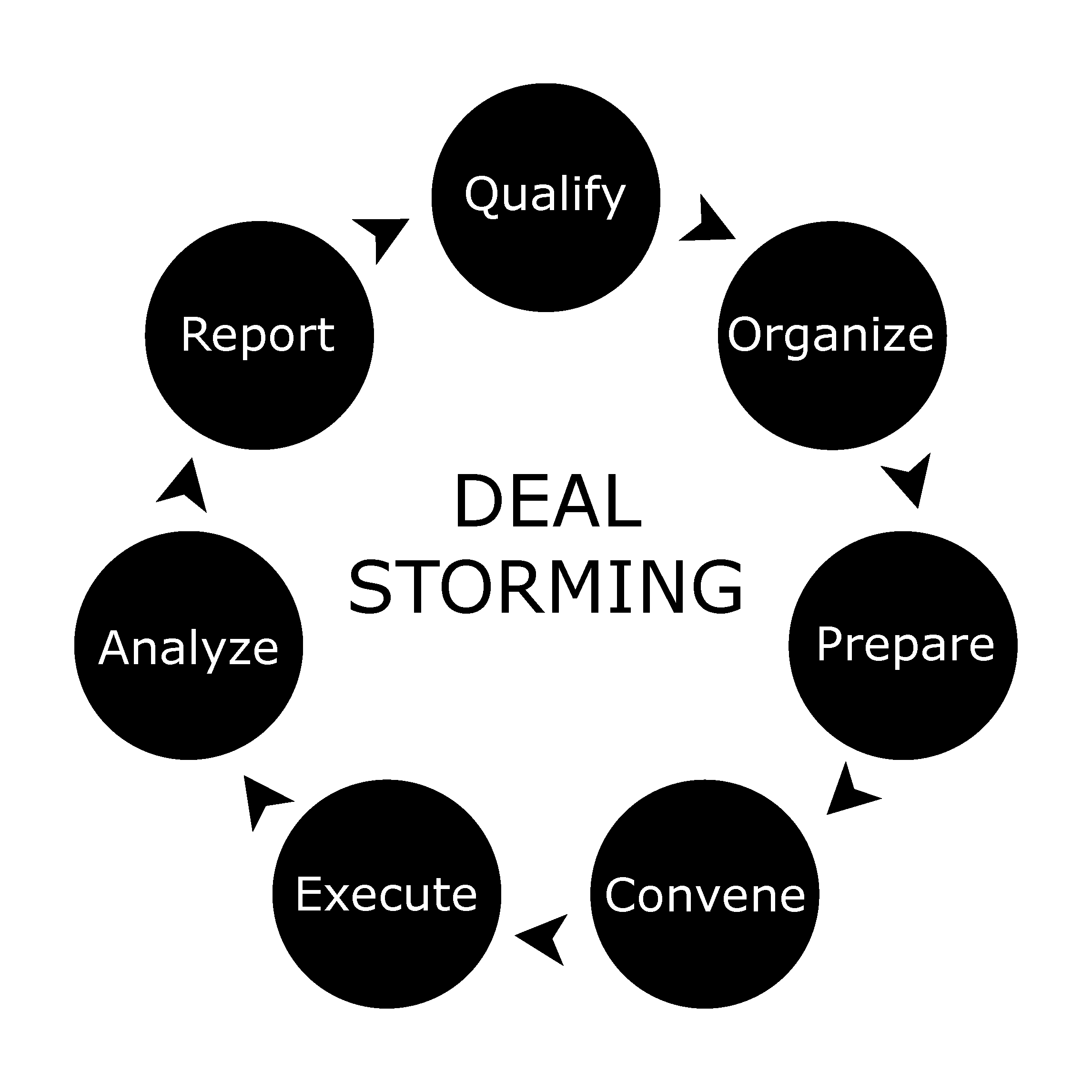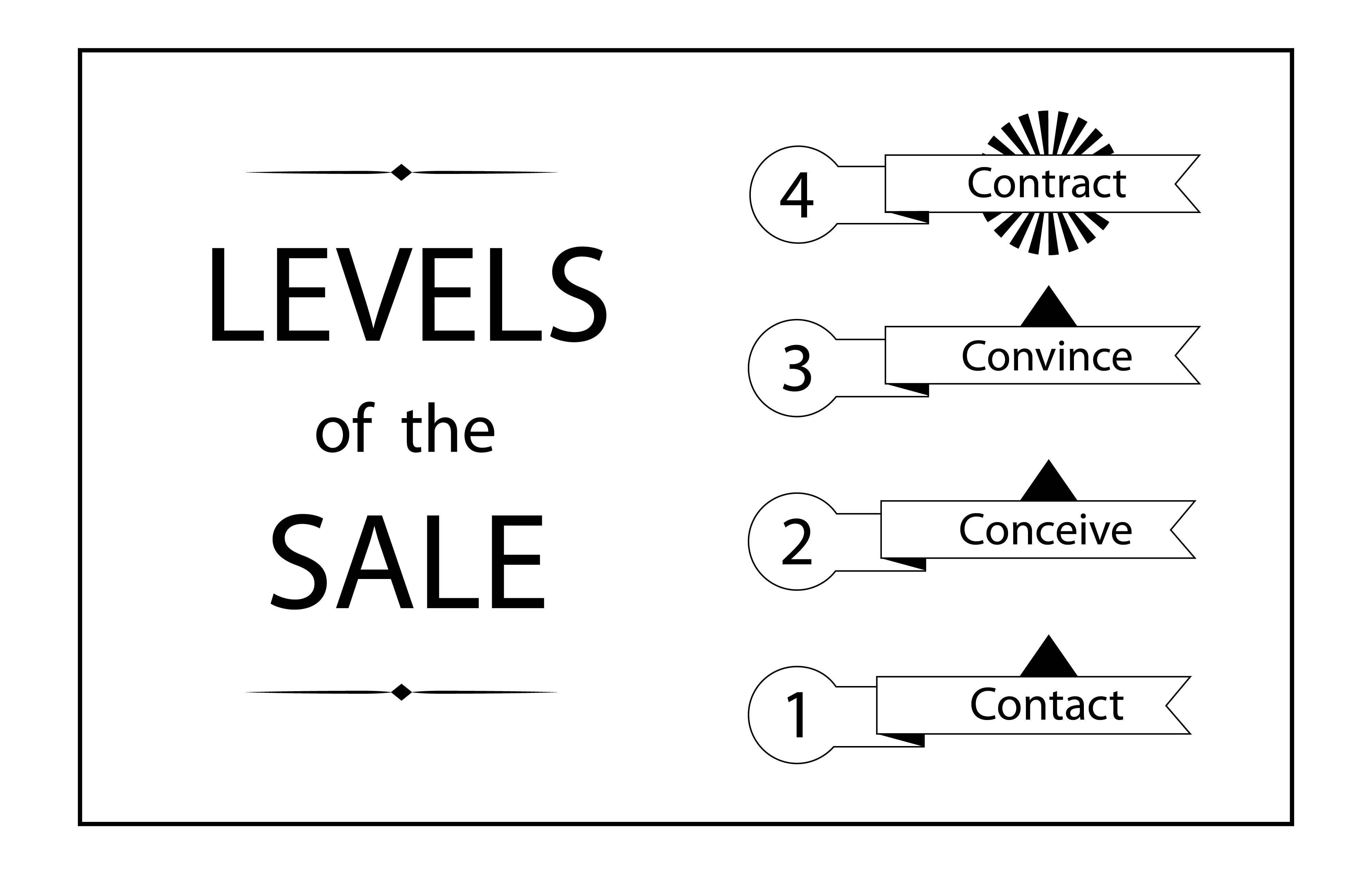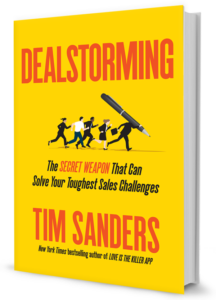Dealstorming
Is it possible to increase innovation in sales and achieve higher growth?
How can diverse perspectives increase your sales results?
Is there a consistent way to increase the likelihood of closing your biggest deals?
Does your organization have a high-potential opportunity?
Last year, I was presenting at a conference in Africa. The theme of the conference was based on an African proverb:
That night, as I enjoyed a memorable dinner with the unique, powerful sound of an African choir ringing in my ears, I reflected on this proverb. Its wisdom struck me in a new way at a deep level. So many major corporate initiatives are stymied because one person wants to act alone. The motivation to act alone may be rooted in the idea of a hero, or it may be simply because someone wants to demonstrate personal accountability.
Still, going farther requires collaboration.
Debunking Creativity Myths
Recent studies on innovation and creativity have debunked the myth that innovation happens in the eureka moment. I’ve interviewed numerous experts who tell me creativity happens more in teams than alone.
And so, when I read Tim Sander’s new book Dealstorming: The Secret Weapon That Can Solve Your Toughest Sales Challenges, I found myself smiling as I saw these truths eloquently memorialized and backed up with research and experience.
Dealstorming: The Secret Weapon That Can Solve Your Toughest Sales Challenges is a monumental book not only for sales leaders but also for all corporate leaders. Whether saving, reclaiming, or winning new business, the techniques Tim shares are proven and actionable. Every organization wants to improve its results, and this is the best blueprint for achieving higher growth that I’ve seen in years.
But, beyond the dealstorm, the techniques in this book teach collaborative practices. The relationships built in this process do not stop with the sale, but continue, fostering a sense of purpose well beyond the deal.
I’m convinced that the techniques in Dealstorming will help you close more business, build better relationships, and increase your organization’s creativity.
How to Win the Complex Sale
Many people think that the sales process is impossible to define and one where you just go with your gut. In your new book, Dealstorming: The Secret Weapon That Can Solve Your Toughest Sales Challenges, you reveal that the sales process is just the opposite: a structured, repeatable process any team can use to win the large, complex sale. What experience and research led you to this conclusion?
Over my 30+ year sales career, I’ve noticed that despite the sharpest of perspectives, without a process you get a mess. The Funnel Activity Management System has been in place for decades, where managers focus on key metrics like cold calls or closing ratios in order to produce a predictable level of sales. Or so one might think.
Throughout that process, the rep used his or her gut feeling to determine which product to pitch, how hard to close and when to move on. But today, that system is necessary, but no longer sufficient for landing high quality sales.
Around the turn of the 21st century, I began to develop the sales collaboration process I call Dealstorming. At Yahoo, while leading the ValueLab and then serving as Chief Solutions Officer, I had the opportunity to participate in 40+ strategic selling situations, where theories were tested and then measured in dollars and cents. Over the last decade, I’ve refined this process through my consultancy, where we’ve participated in 60+ dealstorms at a variety of business-to-business companies. The range of experiences has helped me create a scalable process where managers could leverage a few successful Dealstorms to train the Account Executive on how to run their own.
In writing this book, I have interviewed 200+ sales leaders to understand how they’ve approached problem solving at the deal level, and what works in today’s global-social-mobile world. Collectively, all of these experiences have produced a way of innovating at the deal level that will work for small businesses and enterprises alike. Sometimes the ‘storms will be terrific trios and in other cases, an alliance of many.

Know the 4 Levels of the Sale
Closing a big sale is getting tougher. You identify four developments that are increasing sales complexity: (1) more decision makers; (2) more information at our prospect’s fingertips; (3) increasingly complex technology; and (4) more competitors. How does Dealstorming help against these forces?
Dealstorming is when you organize a solution team comprised of everyone with a big stake in the outcome or expertise about your problem. In every sale, you move through four levels: Contact, Conceive, Convince and Contract. Like a video game, you can get stuck in a level due to the complexity of the situation. On your own, following your sales process, you may repeat your efforts until your deal runs out of lives. By having a diverse collection of perspectives gathered to level up, you’ll increase your ability to notice things you’ve missed individually or come up with creative ways to break through a level.

In many of my dealstorms, I’ve had the group adopt a persona that matched our challenge. If we were stuck at the Contact level (can’t get in the front door), we assumed the role of the Hacker, seeking out unconventional ways to get to decision makers and influencers. We were social selling before social media existed! If we were stuck in the Conceive level, where we were looking to craft a high ROI offering, we assumed the role of the Chef, creating a recipe complete with plating details that helped us differentiate from our competition. When stuck in the Convince level, we assumed the role of the Artist, where we looked for powerful ways to illustrate our value proposition so vividly, our contacts could sell us forward to their buying-tribe.
Throughout 100+ projects, we’ve seen stunning results. We’ve compressed the average sales cycle by 25%. We’ve closed 70% of the deals where we determined a high product-prospect fit up front. This jives with the findings of Miller Heiman Research Institute, too. They’ve been studying what separates the world class sales organizations from their competitors. The one thing they all have in common is the habit of conscious collaboration, across departments, in pursuit of strategic deals. Once won, they experienced better delivery of services since the stakeholders were involved from the start. More importantly, these landmark deals rippled through their company culture, making collaboration and sales innovation “how we do things around here.”
Eliminate the Hidden Silos
Everyone thinks that they are working appropriately as a team. How do you recognize when you are operating in a sales silo?
During my interviews, I can’t tell you how many times a leader has declared, “Our sales organization works as a team!” But in most cases, they were working as a line, where one person passed work to another in a vertical chain. In some situations, they seek spot help from someone in marketing or engineering, but mostly, that was a shortcut to solving a problem and not a partnership.
A real team has a shared vision that aligns their efforts around a goal. This alignment is so strong that individuals will look out for each other for the sake of the final score. When Sales stays in their silo (Account Executive-Manager, Account Coordinator) they are not a complete team capable of solving complex problems. They don’t know what they don’t know. Today’s buyer is multi-disciplinary (User, IT, Finance, Marketing, Operations), which is why today’s sellers are having a tough time winning.
You know you are operating in a sales silo when you are stuck in a sales challenge, and your “collaborative” meetings don’t include those with a stake in the outcome. If you see marketing and operations as a shared service, where you are an internal customer, you are silo-thinking. Real teams are interdependent with each other. They believe that success can come from anywhere.
It’s NOT Just for Sales Leaders
There are many people involved in a Dealstorm not formerly in the sales organization of a company. In your experience, how does Dealstorm involvement benefit those in other departments?
 When you are invited into strategic selling situations, you gain insights that expand your perspective. By understanding the mechanics of a sales challenge, you’ll be more effective in your role, be it marketing, engineering, product design or even finance. You’ll also be involved early on in the process as opposed to when the contract is signed and its time to deliver. By having a voice at the table early on, you’ll be able to shape what happens later, influence the sales group to think about what their actions mean to you and develop relationships along the way.
When you are invited into strategic selling situations, you gain insights that expand your perspective. By understanding the mechanics of a sales challenge, you’ll be more effective in your role, be it marketing, engineering, product design or even finance. You’ll also be involved early on in the process as opposed to when the contract is signed and its time to deliver. By having a voice at the table early on, you’ll be able to shape what happens later, influence the sales group to think about what their actions mean to you and develop relationships along the way.
One thing: The key to the dealstorm is recruiting. You can’t just assume that because there’s a lot of money or a trophy case opportunity on the table that non-sales colleagues will drop what they are doing and work on your project. You need an emotional lever that transcends the bottom line. At Yahoo, I often evoked our rivalries (AOL, MSN Network) to get media producers, analysts, and engineers on our deal-teams. It was a great lever, too, because it drove true collaboration by putting the competition on the outside! In some cultures, you can use conquest or pride as a lever. But don’t underestimate the importance of having a value proposition for joining a dealstorm.
Increase Your Likeability
When I first started reading your new book, I thought it was a new direction for you. Then I realized that you’ve been sharing sales techniques for years. After all, the principles from The Likeability Factor and Love is the Killer App seem perfectly attuned to the sales profession. Tell us more about the evolution of your work.
My first book (Love Is the Killer App) makes the argument that sharing your intangibles from knowledge to network to compassion was the key to being a successful person. When you promote others’ success, they in turn promote yours. Even when they pay it forward and move on in their lives, your contribution makes the world a better place. It will give you post-career satisfaction to know that you found your way by making one for others. It was fundamentally a book about relationships.
The Likeability Factor: How to Boost Your L-Factor and Achieve Your Life’s Dreams took a deep dive into the importance of emotional generosity. By being consistently friendly, helpful, empathetic and authentic, we maintained long term relationships and brought out the best in others. In this case, you promoted a better emotional experience when interacting with others. But still, the book was about relationships.
Dealstorming examines how to expand the circle of relationships to solve complex sales challenges and build a collaborative culture across your company by example. The last chapter of the book explains how leaders must cultivate high quality relationships in order to convert individual creativity into high performance. Much like Love Is the Killer App, I stress the importance of giving as a way to elicit reciprocity. When leaders give a sales person or manager latitude and support in exchange for competency and loyalty, they spin up a powerful connection that produces measureable results. So I guess my body of work comes down to a Paul McCartney lyric: “The love you take is equal to the love you make.”
Dealstorming: The Secret Weapon That Can Solve Your Toughest Sales Challenges
Love is the Killer App
The Likeability Factor: How to Boost Your L-Factor and Achieve Your Life’s Dreams

